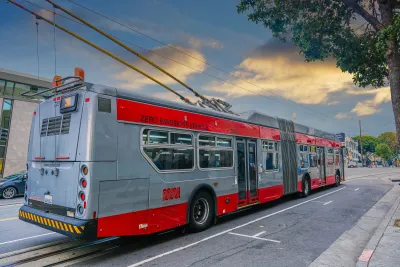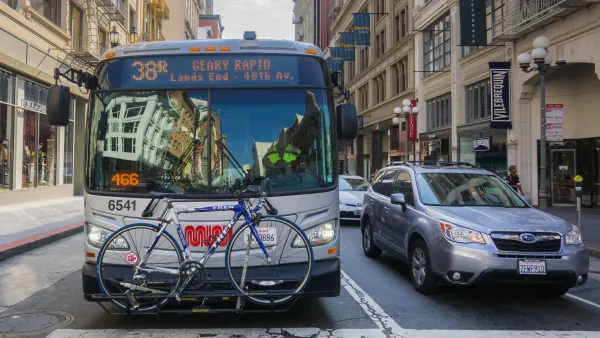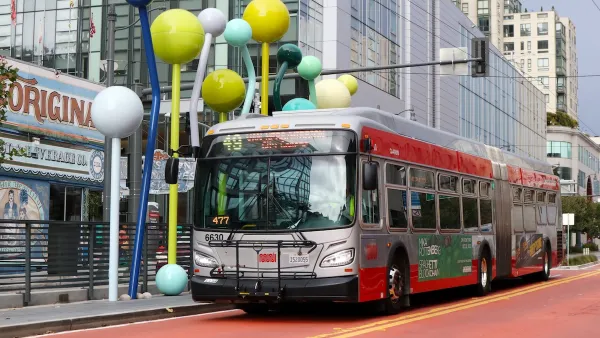To decarbonize its bus system, a new study recommends adding more substantial battery packs to the city’s historic—and all-electric—trolley bus fleet rather than replacing trolley buses with electric buses that require lengthy charging periods.

“Combining battery technology with existing trolley bus infrastructure is the best way for San Francisco to achieve zero emissions and a robust transit service, according to a study released Wednesday by The Climate and Community Project.” Writing in Streetsblog San Francisco, Roger Rudick outlines the report’s findings.
The report recommends adding In Motion Charging (IMC) technology and expanding its entire trolley bus fleet as the fastest and most efficient option for reducing carbon emissions. “However, SFMTA is also looking at replacing historic trolley-bus lines with … battery buses, even though trolley-buses already use zero-emission technology, powered by overhead wire.”
Rudick notes that “This seems to echo the historical error made by San Francisco and other American cities after WWII when they removed electric rail and trolley bus systems and replaced them with diesel buses.”
San Francisco Electrical Construction Industry Research & Advocacy Director Alex Lantsberg says battery-powered buses will have to spend more time out of the system charging, meaning the city will need more of them to provide effective service. “In addition, buses have to expend more energy accelerating when they carry heavy battery packs. And battery-only buses will do more damage to roads because they are heavier.”
Ultimately, Rudick writes, “the idea is to leverage and expand, rather than remove, the existing overhead trolley wire network. That will allow the city to reach zero emission transit more quickly than buying thousands of untested battery-only buses, many of which would just replace buses that are already zero-emission vehicles.”
FULL STORY: Study: Trolley Buses with Batteries are the Best Path to Zero Emissions

National Parks Layoffs Will Cause Communities to Lose Billions
Thousands of essential park workers were laid off this week, just before the busy spring break season.

Retro-silient?: America’s First “Eco-burb,” The Woodlands Turns 50
A master-planned community north of Houston offers lessons on green infrastructure and resilient design, but falls short of its founder’s lofty affordability and walkability goals.

Delivering for America Plan Will Downgrade Mail Service in at Least 49.5 Percent of Zip Codes
Republican and Democrat lawmakers criticize the plan for its disproportionate negative impact on rural communities.

Test News Post 1
This is a summary

Test News Headline 46
Test for the image on the front page.

Balancing Bombs and Butterflies: How the National Guard Protects a Rare Species
The National Guard at Fort Indiantown Gap uses GIS technology and land management strategies to balance military training with conservation efforts, ensuring the survival of the rare eastern regal fritillary butterfly.
Urban Design for Planners 1: Software Tools
This six-course series explores essential urban design concepts using open source software and equips planners with the tools they need to participate fully in the urban design process.
Planning for Universal Design
Learn the tools for implementing Universal Design in planning regulations.
EMC Planning Group, Inc.
Planetizen
Planetizen
Mpact (formerly Rail~Volution)
Great Falls Development Authority, Inc.
HUDs Office of Policy Development and Research
NYU Wagner Graduate School of Public Service





























